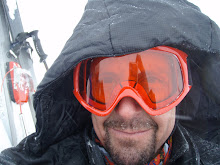

I recently had the opportunity to travel to a part of Sweden called Värmland, specifically a part of Värmland called ‘Finnskogen’ (literally The Finnish Forest). The Finnish history of the region goes back to a time (seventeenth century) when the Swedish king ruled much of Finland. In an effort to increase tax income he encouraged Finns to settle a part of Western Sweden along the border with Norway. These Finnish immigrants brought slash and burn agriculture, called svedjebruk. After the clearing they grew a hearty rye in the forest openings.
It is interesting to consider that many of the Finns of this area eventually continued west…to America. As my Dad reminds me, the Finns have the most interesting of migration histories.
I found myself in Finnskogen at the invite of one of the researchers, Gabriel, of the Friluftsliv i förändring research team. Gabriel, knowing my interest in skiing, invited me to experience some of the finest ski trails Sweden has to offer. Seemingly endless trails up and down rolling hills, over bogs, around small lakes…the forest was buried in snow and encrusted with rime frost, a fairy tale winter setting for sure. If only I had my camera on the first day, then I would show you a sky unbelievably bright blue against the snowy forest…but you will have to settle with some pictures from a blue-grey day…also lovely.

On this blue-grey day, Gabriel and I skied 40 km into Norway. Besides the amazing skiing, other highlights included a winter fika (blueberry soup, rolls, sandwiches, fruit and chocolate) and the other highlight was a wolf kill site. We skied upon a moose skeleton that was picked clean! This event has special significance for me as I am following the wolf debate in Sweden quite closely.
We were skiing in the heart of Sweden’s wolf country and up against the only part of Norway that wolves are allowed. Seriously low tolerance for wolves in Scandinavia. Almost all of Norway and the entire reindeer region of Sweden and Finland (HUGE region) have no tolerance for wolves, literally. Sweden is wrestling with this question…how many wolves should be allowed? How many wolves are necessary for a healthy population? What are the social costs of wolves? Should wolves be transported (flown in) from Eastern Finland to add genetic diversity? And on and on. I actually think the experience of wolves in America has much to offer this debate. (Hmm? Next project?)
One must really wrestle with the question of what is ‘natural’ as one tries to form an opinion…people and wolves have shared the landscape of Scandinavia since the ice retreated. Wolves and people belong. It will be interesting to see if the Swedes ultimately have room for wolves in 21st century Sweden? I will return to this topic…





No comments:
Post a Comment